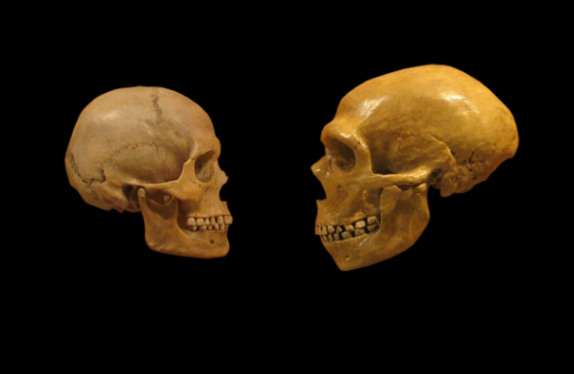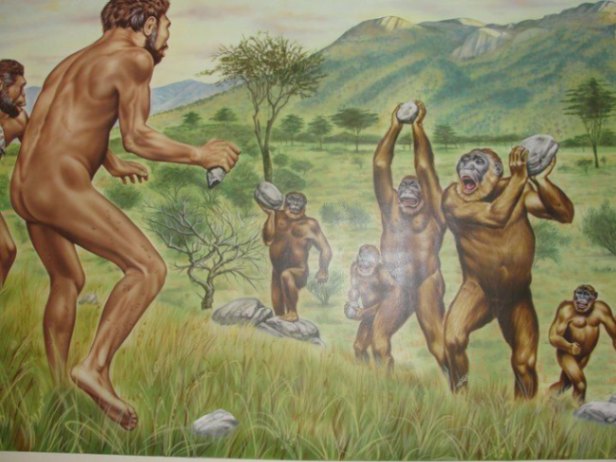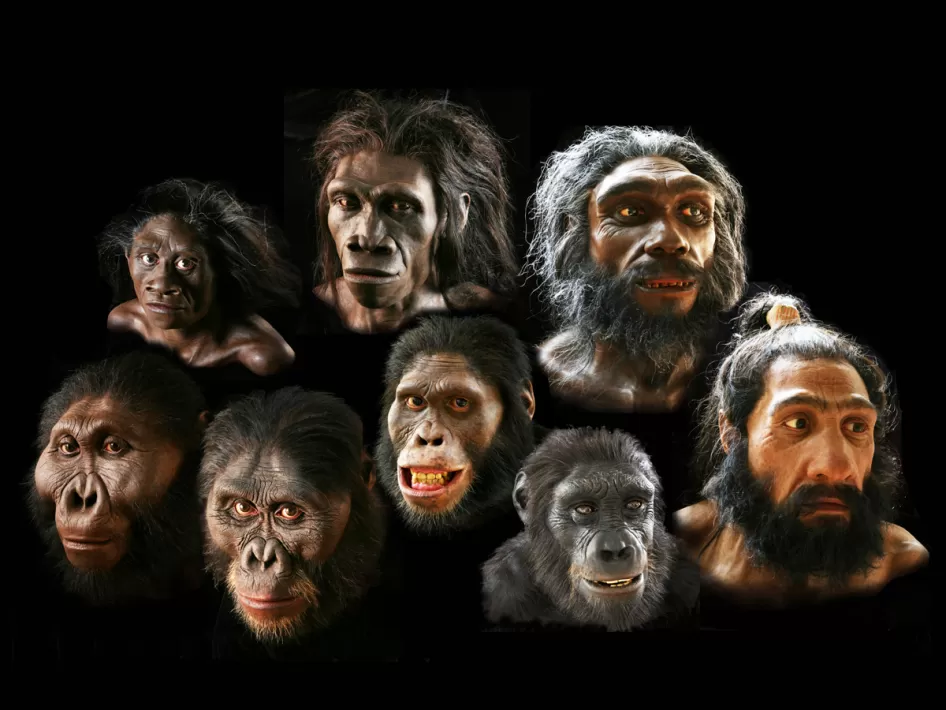Most animals usually have many other closely related species. Think about dogs, wolves, and foxes—they all belong to the same family and share many similarities. Birds, too, have countless variations and species that look and act alike. But when it comes to humans, we stand alone. The closest relative we have is the chimpanzee. While we share a lot of our DNA with them, they are not close to being human-like. So why is it that there are no other human-like species around today?
A World Once Full of Hominins
In the past, there were many human-like species, known as hominins. This group included Neanderthals, Denisovans, Homo erectus, and several others. These hominins shared the planet with our ancestors, Homo sapiens, for thousands of years. But today, all those other hominins are gone, leaving Homo sapiens (we, humans) as the sole survivors.
Human skull (left) vs Neanderthal skull (right):

Why Did the Others Go Extinct?
One of the main reasons is competition for resources. The extinction of other hominins seems to coincide with the period when Homo sapiens began migrating out of Africa. As our ancestors spread across the globe, they encountered other hominins and competed with them for resources.
When different groups compete for the same resources, clashes are inevitable. There is evidence to suggest that Homo sapiens may have fought with other hominins, leading to their decline.

Superiority of Homo Sapiens
Homo sapiens were more intelligent than other hominins and were better at finding food, making tools, and adapting to different environments. This gave them an advantage in hunting and gathering.
They were also better at social cooperation. They developed complex social structures and communication skills. They could work together more effectively, share knowledge, and solve problems collectively. All these capabilities provided them a competitive advantage over other hominins.

Interbreeding
In ancient times, when one group defeated another, it was common for the victors to kill all the males, take the females into their own group, and breed with them. This means that the genes of other hominins could have been absorbed into the larger human gene pool through interbreeding.
Genetic evidence supports the idea of interbreeding between Homo sapiens and other hominins. DNA from Neanderthals and Denisovans can still be found in modern humans, suggesting that instead of entirely wiping out these groups, Homo sapiens interbred with them. Over time, the unique characteristics of these other hominins were absorbed into the human population.
Natural Extinction
It’s also possible that some hominins became extinct on their own, without direct human intervention. Changes in climate, diseases, and other natural factors could have played a role in their decline. Survival in the harsh conditions of the prehistoric world was challenging, and not all species were able to adapt successfully.
Could New Human Species Emerge?
Could humans ever split into multiple species again? It’s a possibility. For this to happen, populations would need to be isolated from each other for a very long time, with different environments and challenges. Over millions of years, these isolated groups could evolve distinct characteristics, eventually becoming separate species.
However, with today’s global connectivity and the ability to travel and communicate across the world, such isolation is unlikely. But who knows what the distant future holds? If humans ever colonize other planets or live in vastly different environments for extended periods, the potential for new human-like species could emerge once more.
Reference Links:
https://en.wikipedia.org/wiki/Interbreeding_between_archaic_and_modern_humans
